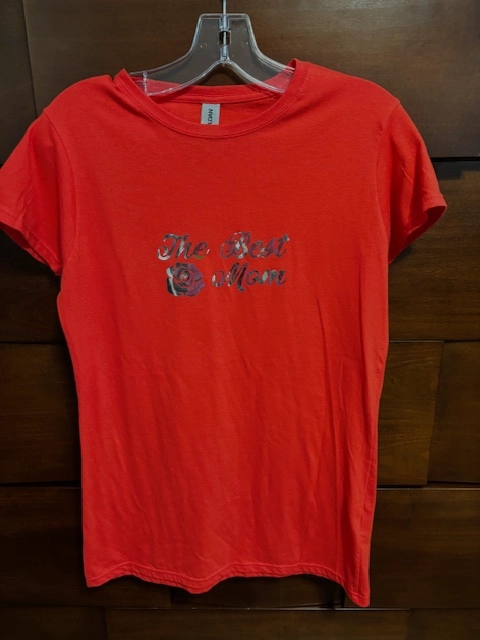The Art of Custom-made Embroidery: Opening the Tricks to Creating Special and Memorable Layouts
Needlework, a craft soaked in custom and artistry, holds within its complex stitches the power to change material right into a canvas of one-of-a-kind expression. The secrets to producing customized embroidery layouts that captivate the eye and leave a long lasting impact lie in a delicate balance of technique, creative thinking, and focus to detail. As we look into the globe of customized embroidery, we discover the nuanced interplay between string choice, stitch intricacy, and design customization that elevates a plain garment to a work of art. Join us on a journey through the art of customized embroidery as we unravel the secrets behind crafting really unforgettable and unique developments.
Picking the Right Embroidery Threads
When choosing needlework strings, what vital aspects should you take into consideration to ensure the ideal outcomes for your customized layouts? The selection of needlework thread is vital in determining the final outcome of your stitched style.
Moreover, the weight or thickness of the thread plays a substantial duty in the appearance of the embroidery. Thicker strings can add dimension and structure to your design, while finer strings are optimal for complex details and tiny message. In addition, considering the color fastness and washability of the string is important to guarantee that your customized designs maintain their quality and vibrancy over time. By meticulously examining these aspects and selecting high-quality strings that meet your specific needs, you can improve the visual charm and durability of your embroidered creations.
Exploring Various Stitch Techniques
To look into the world of 'Discovering Various Stitch Strategies', one need to grasp the complexities and nuances that each stitching technique offers the art of needlework. Different stitch strategies not just include aesthetic rate of interest but additionally contribute to the total texture and dimension of the design. One popular stitch strategy is the satin stitch, which involves carefully jam-packed parallel stitches to create a smooth and glossy surface, perfect for completing forms and creating strong lays out.
On the other hand, the backstitch is a versatile technique usually utilized for outlining and including great information. It includes stitching in reverse to develop a strong line of needlework. In addition, the French knot stitch includes a responsive element to styles, best for creating textured accents like flower facilities or attractive touches.
Discovering different stitch methods enables embroiderers to play with light, shadow, and deepness within their layouts, raising the aesthetic allure and artistic high quality of their needlework tasks. By grasping various sewing techniques, one can unlock countless possibilities for creating distinct and memorable custom needlework pieces.
Incorporating Personalized Layout Aspects
Having actually checked out the intricacies of different stitch techniques such as the satin stitch, backstitch, and French knot, the emphasis now shifts towards incorporating individualized layout components in custom needlework jobs. Personalized layout elements play an important duty in making embroidery jobs truly distinct and unforgettable.
An additional way to integrate individualized design components is by including symbols or themes that hold special meaning to the recipient or show their interests and personality. Incorporating a favorite blossom, animal, or hobby-related sign can make the embroidery design more meaningful and customized. In addition, selecting colors that reverberate with the recipient or straighten with the intended theme can better improve the customization of the needlework job.
Mastering the Art of Color Coordination
One trick element of color sychronisation is understanding color concept. This includes knowing just how different shades connect with each other, the feelings they communicate, and exactly how they can be incorporated to produce visually attractive layouts. By applying color theory concepts, embroiderers can create harmonious color palettes that boost the total appearance of the layout.
In addition, taking note of contrast is crucial in shade coordination. Utilizing contrasting shades can assist certain elements of the design pop, improve clarity, and create a visually dynamic needlework item. By mastering the art of color coordination, embroiderers can elevate their styles and create memorable pieces that resonate with customers and viewers alike.
Enhancing Texture With Advanced Embroidery Stitches

Bullion knots, on the various other hand, can be made use of to develop twisted, ropelike components that include an elegant feel to the embroidery. Exploring with these advanced embroidery stitches allows you to push the limits of conventional embroidery and produce genuinely distinct and aesthetically enticing textures in your designs.
Final Thought
Finally, the art of custom embroidery entails a mix of like this choosing the ideal strings, checking out various stitch methods, incorporating individualized style components, mastering shade coordination, and enhancing structure with sophisticated stitches. straight from the source By understanding and implementing these key aspects, embroiderers can create unique and memorable designs that showcase their imagination and skill. Needlework enthusiasts can unlock the tricks to creating gorgeous and bespoke items that stand out and leave a long-term perception.